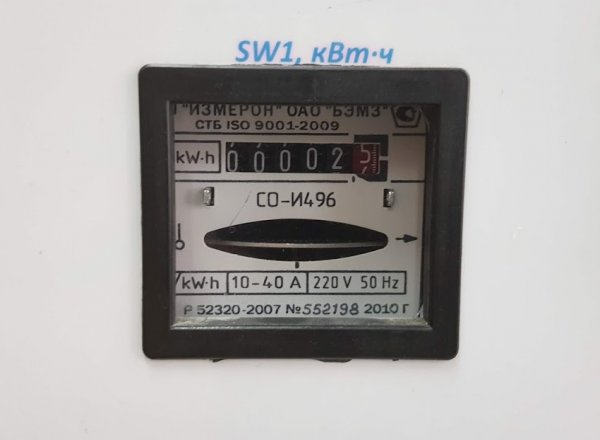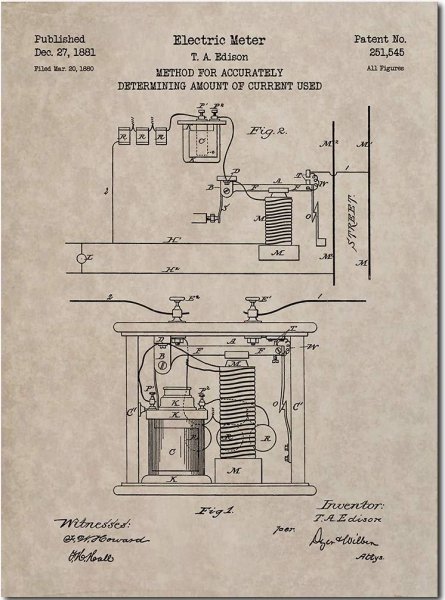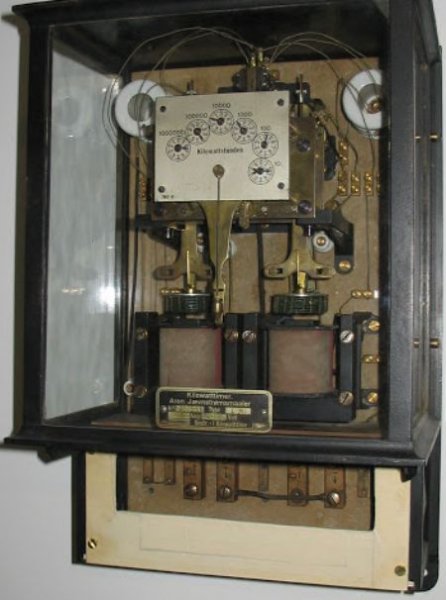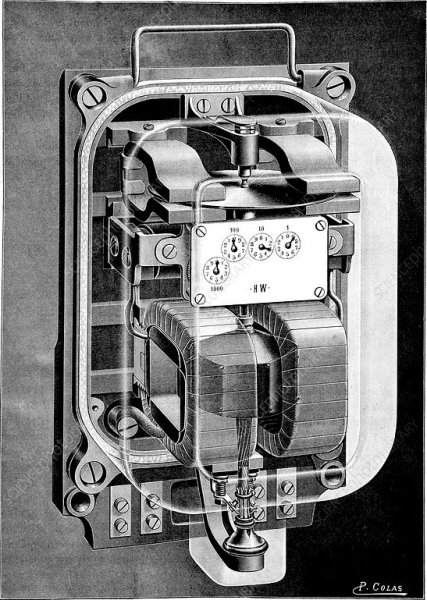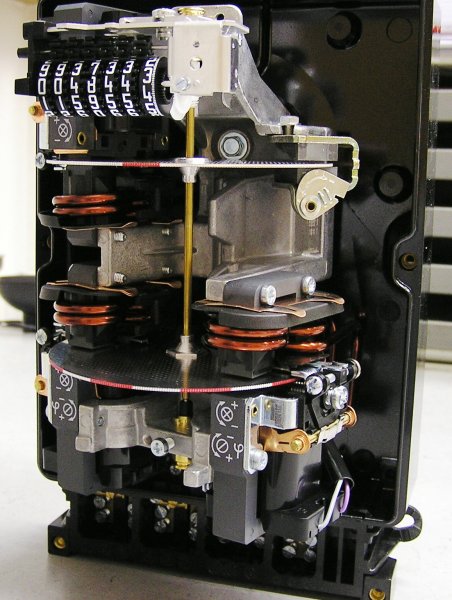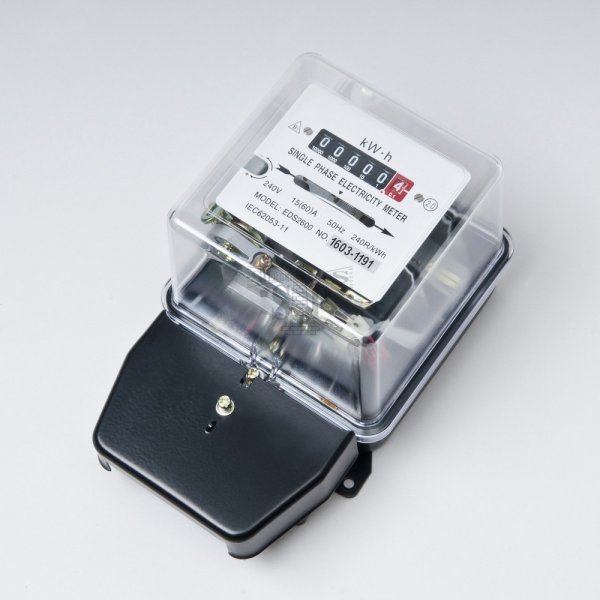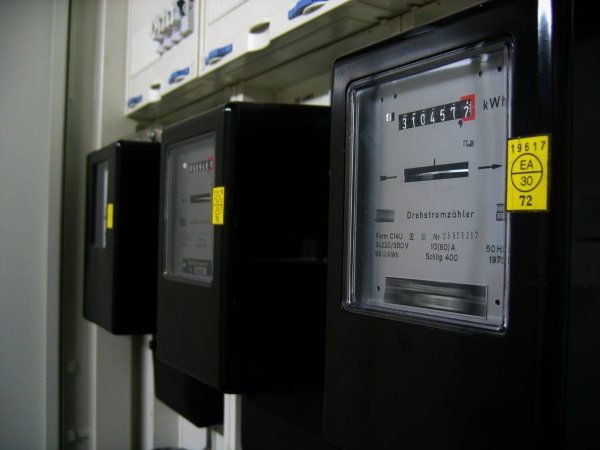History of the electricity meter
The 19th and 20th centuries proved unusually generous in scientific discoveries, especially in the field of electromagnetism. The "low start" of scientific and technical progress for the next 150 years was given in the 1920s. the discovery of the interaction of electric currents by Andre Marie Ampere… Georg Simon Ohm settled after him in 1827 relationship between current and voltage in wires… Finally, in 1831, Michael Faraday discovered law of electromagnetic induction, which underlie the principles of operation of the following key inventions — generator, transformer, electric motor.
Electricity became a commodity, as it is known, thanks to the dynamo, invented independently by Hungarian physicist Anzós Jedlik and German electrical inventor Werner von Siemens in 1861 and 1867 respectively. Since then, power generation has been firmly established on a commercial path.
It must be said that at that time inventions and discoveries were "waiting" at every turn.The ideas of electric lamp, dynamo, electric motor, transformer crystallized as if by themselves on opposite parts of the planet.
Something similar happened with the counter, which was later recalled by the "author" of the induction counter (and at the same time the co-inventor transformer) Hungarian electrical engineer Otto Titus Blaty: “Science was like a rainforest. All he needed was a good ax and wherever you hit you could cut down a huge tree. «
The first patent for an electric meter was issued in 1872 to American inventor Samuel Gardiner. His device measures the time it takes for electricity to reach the charging point. The only condition (this is also a drawback of the device) is that all controlled lamps must be connected to one switch.
The creation of new principles for the operation of electricity meters is directly related to the improvement and optimization of the electricity distribution system. But since at that time this system was still being formed, it was impossible to say for sure which principle would be optimal. Therefore, several alternative versions were tested in practice at the same time.
How much does a kilowatt weigh?
For example, if the dynamo made it possible to produce electricity in significant volumes, then the Thomas Edison light bulb contributed to the creation of an extensive lighting network. As a result, the Gardiner counter lost its relevance and was replaced by an electrolytic counter.
In the earliest stage of the widespread use of electricity meters, electricity was literally "weighted". The electrolytic meter, invented by the same Thomas Alva Edison, works on this principle.In fact, the meter counter was electrolytic, where a very accurately weighed (as far as was possible at the time) copper plate was placed at the beginning of the counting period.
As a result of the passage of current through the electrolyte, copper is deposited. At the end of the reporting period, the plate was weighed again and the electricity consumption was charged based on the difference in weight. This principle was first applied in 1881 and was successfully used until the end of the 19th century.
It is noteworthy that this fee is calculated in cubic feet of gas that was used to generate the electricity consumed. This is how an Edison electrolyzer was calibrated. Then, for convenience, Edison equipped his device with a counting mechanism - otherwise, taking readings from a measuring device seemed to be a process extremely difficult for the power companies and completely impossible for the consumer. However, the convenience added little.
In addition, electrolytic meters (at that time Siemens Shuckert produced a water meter and Schott & Gen a mercury meter) had another significant common drawback. They can only record amp-hours and remain insensitive to voltage fluctuations.
In parallel with the electrolytic counter, a pendulum counter appeared. For the first time, the principle of its action was described by the Americans William Edward Ayrton and John Perry in the same year 1881. But since then, as already mentioned, ideas were floating in the air, it is not surprising that three years later exactly the same counter was built in Germany by Hermann Aron.
In an improved form, the meter is equipped with two pendulums with coils connected to a current source. Two more coils with opposite windings were placed under the pendulum.A pendulum, as a result of the interaction of the coils under an electrical load, moved faster than without it.
The other, on the other hand, was moving more slowly. At the same time, the pendulums changed their functions every minute to compensate for the difference in the initial frequency of oscillation. The difference in travel is accounted for in the counting mechanism. At power up, the clock was started.
Wind of change
Pendulum counters were not a cheap "pleasure" as they contained two whole clocks. At the same time, they made it possible to fix amp-hours or watt-hours, which made them unsuitable for AC operation.
A revolutionary discovery in its own way alternating current, made (of course, independently of each other) by the Italian Galileo Ferraris (1885) and Nikola Tesla (1888), served as a stimulus for the next stage in the improvement of measuring devices.
In 1889, a motor counter was developed. It was designed for General Electric by American engineer Elihu Thomson.
The device was an armature motor without a metal core. The voltage across the collector is distributed across the coil and resistor. Current drives the stator, resulting in torque proportional to the product of voltage and current. A permanent electromagnet acting on an aluminum disc attached to the armature provides a braking torque. The most significant drawback of the electricity meter is the collector.
As you know, at that time there was no consensus in the scientific community as to which of the systems— based on direct current or alternating current — will be most promising… The meter described by Thomson is designed primarily for direct current.
Meanwhile, the arguments in favor of alternating current are growing, since the use of direct current does not allow for voltage changes and, as a result, the creation of larger systems. Alternating current found more and more widespread use, and at the beginning of the 20th century, alternating current systems began to gradually replace direct current in electrical engineering practice.
This set for George Westinghouse (who acquired Tesla's patents for the use of alternating current) the task of accounting for electricity and this accounting had to be as accurate as possible. During this period (also associated with the invention of the transformer) the device was patented, which was actually the prototype modern AC meter… History also has several “inventor fathers” of the induction counter.
The first induction measuring device is called the «Ferraris meter», although he did not assemble it at all. To Ferrari's credit is the following discovery. Two rotating fields, which are out of phase with the alternating current, cause the rotation of a solid rotor - a disk or cylinder. Counters based on the induction principle are still produced today.
Hungarian engineer Otto Titus Blaty, also known as the inventor of the transformer, proposed his version of the induction meter. In 1889, he received two patents at once, German number 52,793 and US number 423,210, for an invention officially designated as the "Alternating Current Electric Counter."
The author gave the following description of the device: “This counter essentially consists of a metallic rotating body, such as a disc or cylinder, which is acted upon by two magnetic fields that are out of phase with each other.
This phase shift results from the fact that one field is generated by the main current, while the other field is generated by a high self-inductance coil shunting the points in the circuit between which the power consumption is measured.
However, the magnetic fields do not intersect in a body of revolution, as in the well-known Ferrari mechanism, but pass through different parts of it independently of each other. » The first countertops produced by Ganz, where Blatti worked, were fixed on a wooden base and weighed 23 kg.
Of course, at the same time, the same characteristic of both fields was discovered by another pioneer of electrical engineering, Oliver Blackburn Shellenberger. And in 1894, he developed an electricity meter for AC systems. The screw mechanism provided torque.
However, this meter is not suitable for working with electric motors, as it does not provide the voltage element required for measurement power factor.
This counter was slightly smaller than the Blati device, but also quite bulky and quite heavy - it weighed 41 kilograms, that is, more than 16 kg. Only in 1914, the weight of the device was reduced to 2.6 kg.
There is no limit to perfection
Thus, it can be stated that at the beginning of the 20th century, the counter became part of everyday practice. This is also confirmed by the appearance of the first measurement standard. It was issued by the American National Standards Institute (ANSI) in 1910.
Characteristically, in addition to recognizing the importance of the scientific significance of measuring devices, the standard also emphasizes the importance of the commercial component. The first known International Electrotechnical Commission (IEC) measurement standard dates back to 1931.
By the beginning of the 20th century, the devices had undergone a number of changes, without taking into account the reduction in weight and dimensions: expansion of the load range, compensation for changes in the load factor, voltage and temperature, the appearance of ball bearings and magnetic bearings (which significantly reduced friction). The quality characteristics of the brake electromagnets and the removal of oil from the support and the counting mechanism were improved, which increased the service life.
At the same time, new types of meters appeared - multi-tariff meter, peak load meter, prepaid energy meter, as well as three-phase induction meters. The latter uses two or three measuring systems mounted on one, two or three discs. In 1934, an active and reactive energy meter developed by Landis & Gyr appeared.
The further course of scientific and technical progress, as well as the development of market relations, found expression in the production of measuring devices. The development of electronics had a serious impact — in the 1970s, along with induction measuring devices, electronic measuring devices appeared. Naturally, this greatly expanded the functionality of the devices. First of all, it is automated accounting systems (ASKUE), multi-tariff regime.
Subsequently, the functions of the meter expanded even further and went beyond the limits of only energy and resource reporting. This includes protection against visible violations, prepayment, load balancing control and a number of other functions.Readings are read from electrical networks, telephone lines, or wireless data transmission channels.

